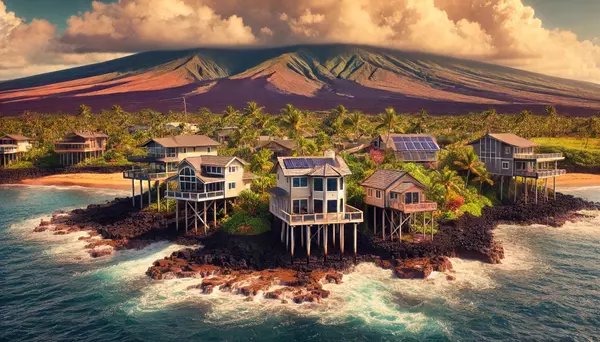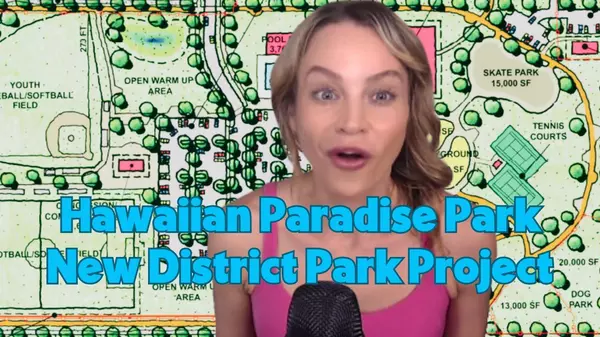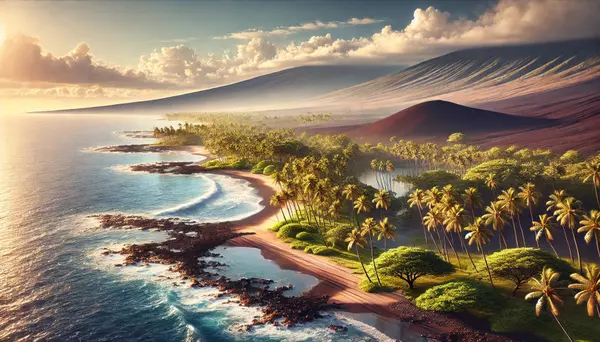Understanding Lava Zones on the Big Island of Hawaii
Thinking About Buying Property on the Big Island of Hawaii? Here’s What You Need to Know About Lava Zones
Are you considering buying property on the Big Island for the first time? Living on an active volcanic island is a truly unique experience, and understanding the lava zones is absolutely crucial. I’m Amber Haley, your local real estate expert, and today I’ll break down what lava zones are and what they mean for you as a real estate buyer.
Quick Disclaimer
Before we dive in, a quick disclaimer: I’m not a volcanologist. I’m a real estate agent, and while most of the information in this guide comes from trusted sources like the USGS and the Hawaiian Volcano Observatory, I’ll also share my personal experience as a Big Island resident and a homeowner who lived through the massive 2018 eruption.
The Big Island's Volcanoes
The Big Island is home to five major volcanoes: Kilauea, Mauna Loa, Mauna Kea, Hualalai, and Kohala. Fun fact—Mauna Loa is the largest active volcano on the planet, and Kilauea is one of the most active! While there’s no lava flow right now, that could change at any time, so depending on when you’re reading this, things could be heating up again.
Lava Hazard Zones: An Overview
According to the USGS, our understanding of volcanic activity is based on written records dating back to the early 1800s, Hawaiian oral traditions, and geological mapping. Using this data, the USGS created a Lava Hazard Zone map in 1974, which was updated in the '80s and '90s.
The island is divided into 9 Lava Hazard Zones, with Zone 1 being the highest risk and Zone 9 the lowest.
Breakdown of Lava Zones
-
Zones 1 and 2: These are the highest-risk areas, located closest to the volcanic vents of Kilauea and Mauna Loa. Homeowner’s insurance is both costly and hard to come by, and financing is often difficult. Many properties here require cash buyers.
-
Zone 3: This zone includes areas that have experienced lava flows historically but are less frequently affected. Insurance and financing might still be tricky but are generally more manageable than in Zones 1 and 2.
-
Zones 4 to 6: As you move into these zones, the risk of lava flows decreases significantly. Although these areas have had some lava activity in the past, it's much less frequent. Insurance and financing are more straightforward—closer to what you might expect on the mainland.
-
Zones 7 to 9: These zones are considered the lowest risk on the island. They include regions where lava flows are highly unlikely. Homeowners in these zones typically face no issues with insurance or financing.
Tips for Real Estate Buyers
1. Do Your Research
Before making any purchase, it’s essential to understand the lava zones and the associated risks. Knowing the potential impact on insurance and financing is key.
2. Consult with Experts
Talk to local real estate agents (like me!), insurance providers, and maybe even a volcanologist to get detailed insights about the area you're considering. Their expertise can help you make an informed decision.
3. Plan for the Future
If you decide to buy in a higher-risk zone, make sure you have an emergency plan in place. Be prepared for potential volcanic activity and familiarize yourself with evacuation routes.
4. Consider All Costs
Don’t just focus on the property’s price tag. Take into account additional expenses such as insurance, future evacuations, and other lava-related costs. These can really add up, especially in high-risk zones.
Living on an Active Volcano
Living on the Big Island means accepting some level of risk from volcanic activity. But with proper research and planning, you can find a stunning property that fits your lifestyle and budget while staying safe.
In Conclusion
Understanding the lava zones on the Big Island is crucial for any real estate buyer. These zones significantly affect insurance, financing, and, most importantly, the safety of your investment. By doing your homework and consulting with local experts, you can navigate these challenges and still find your dream home in paradise.
Categories
Recent Posts










